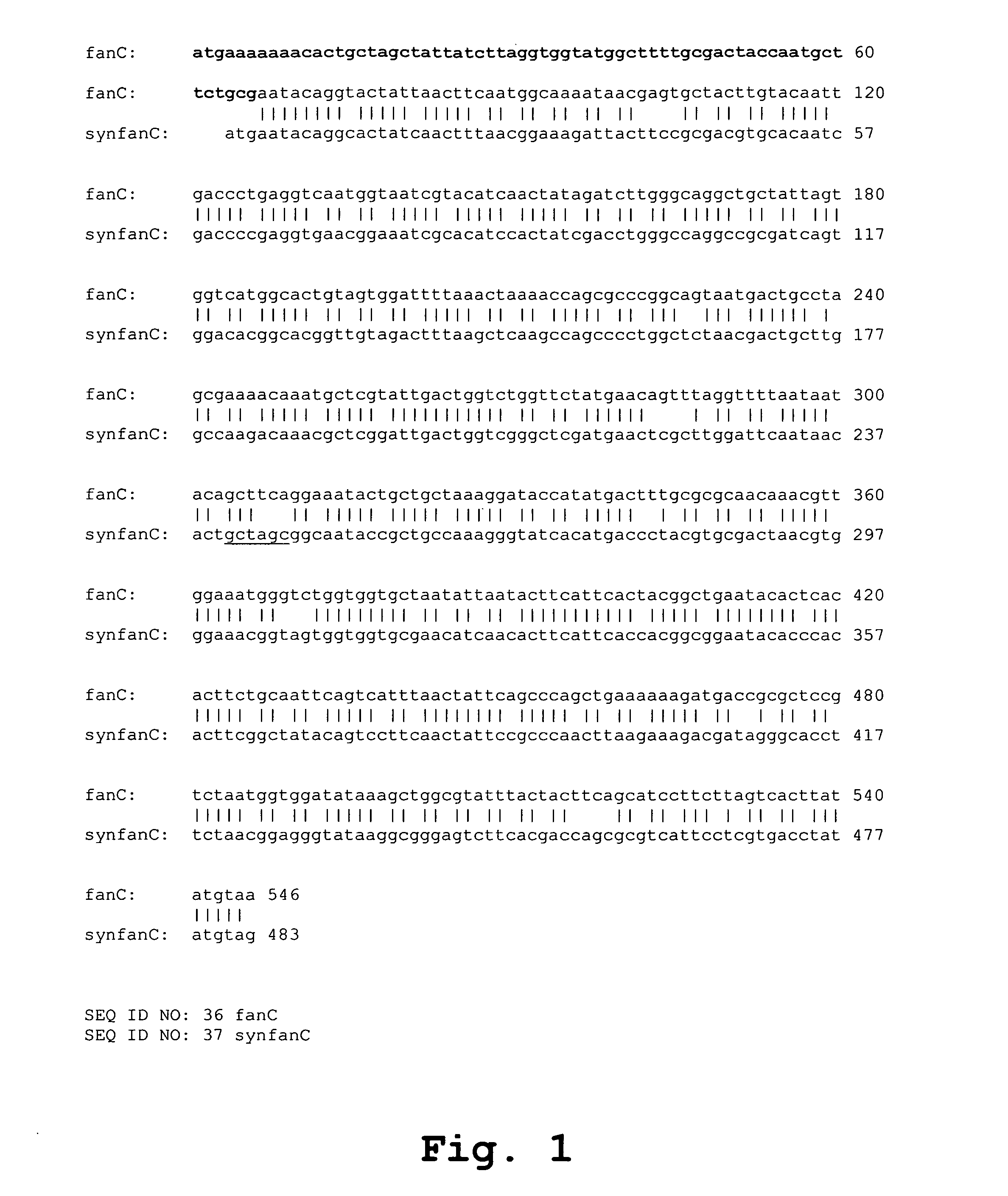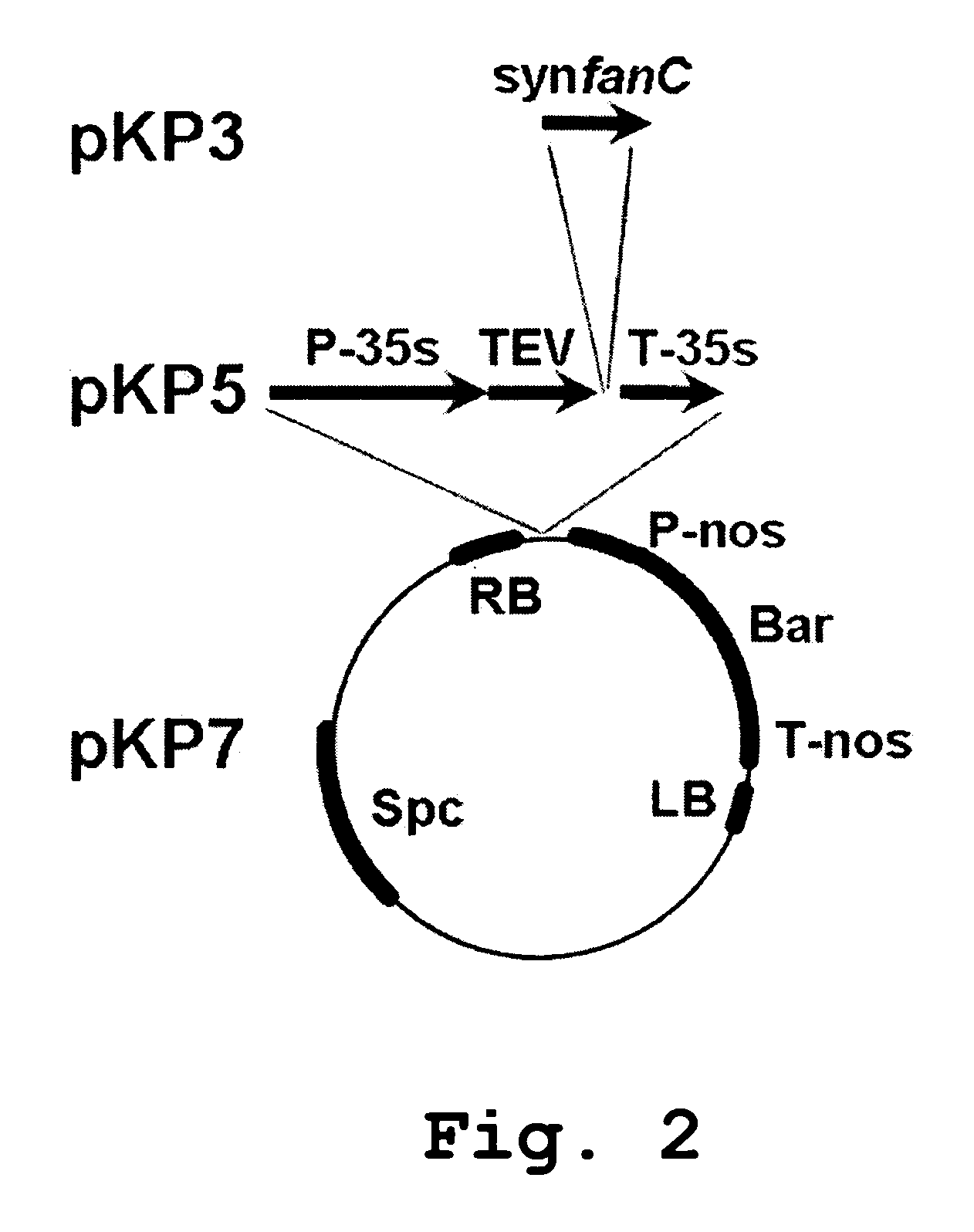Edible vaccines expressed in soybeans
a technology of soybeans and vaccines, applied in the field of vaccines, can solve the problems of not generating an immune response, affecting the effect of the immune response, and the inability of the helper t lymphocytes to recognize antigens on the surface of pathogens, and achieve the effect of inducing toleran
- Summary
- Abstract
- Description
- Claims
- Application Information
AI Technical Summary
Benefits of technology
Problems solved by technology
Method used
Image
Examples
Embodiment Construction
[0070]Recombinant techniques using expression cassettes have allowed the incorporation of exogenous genes (as well as endogenous genes) into other organisms. Expression cassettes generally contain a number of regulatory elements. The construction of the expression cassette of the instant invention contains one or more of the following regulatory elements: 1) a promoter to initiate transcription, 2) an enhancer region to enhance transcription and / or translation, dependent upon the promoter used, 3) sequences to target transcription, translation, and / or protein accumulation to specific locations within the plant or cell, 4) a coding region, which determines the specific protein or proteins that will be expressed in transgenic plants, and 5) a polyadenylation recognition site to determine transcription termination and for mRNA stability. In addition, 6) a selectable marker cassette can be included for selection during transformation and in subsequent generations.
[0071]The promoter of t...
PUM
| Property | Measurement | Unit |
|---|---|---|
| molecular weight | aaaaa | aaaaa |
| Time | aaaaa | aaaaa |
| temperature | aaaaa | aaaaa |
Abstract
Description
Claims
Application Information
 Login to View More
Login to View More - R&D
- Intellectual Property
- Life Sciences
- Materials
- Tech Scout
- Unparalleled Data Quality
- Higher Quality Content
- 60% Fewer Hallucinations
Browse by: Latest US Patents, China's latest patents, Technical Efficacy Thesaurus, Application Domain, Technology Topic, Popular Technical Reports.
© 2025 PatSnap. All rights reserved.Legal|Privacy policy|Modern Slavery Act Transparency Statement|Sitemap|About US| Contact US: help@patsnap.com



